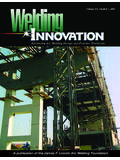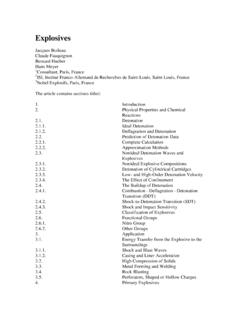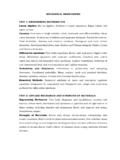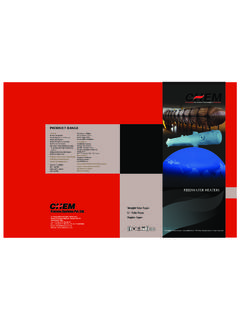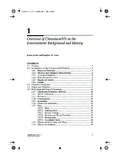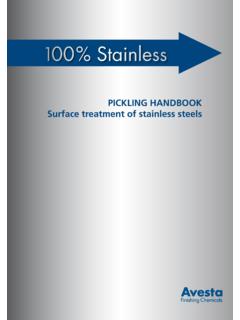Transcription of Comparison of Plastic vs Metal Processes - SMP Tech
1 Comparison of Plastic vs Metal ProcessesAlan Federl: SABIC Innovative plastics Growth Leader- WestNo. 2 Comparison of ProcessesPlastics vs MetalsDefinitionStructural Foam: OverviewStructural Foam:SABIC GradesStructural Foam: DesignTable of ContentsDesign ConsiderationsPotential Benefits of SABIC Innovative plastics Structural Foam GradesSABIC Innovative plastics Structural Foam GradesNo. 3 Structural Foam: DefinitionWhat is Engineering Structural Foam?A form of molding in which a Plastic melt/gas mixture is injected into a mold in order to create a foam core with two external foam creates parts without sink in thick sections or ribs, and with a 5-20% density reduction.
2 Similar concept to injection moldingLow pressure process due to foam in Plastic lightweight but rigid parts suitable for structural applications, 4 What about Injection Molding for Medical Enclosures??Are parts larger than a toaster? YESNO Part Volume less than 20000?? YESNOPart requires greater than normal loads?? ( , Wall >4mm, Ribs = Wall, High Filler content???NO YESI njection Molding is a very suitable Foam CandidatesNo. 5 Key Advantages of Injection Molding No Paint Solution Lowest Piece part solution (typically) Best part complexity solution Large number of materials options Large number of converters, tool builders Very well understood 6 Gas expands inside plasticized material to create foam core Typical Wall Thickness is SKINSKINCORES tructural Foam:Cross-section of Wall6 Cellular Structure Throughout the PartNo.)
3 7 Large Part Capability Low Pressure Process High Stiffness to Weight Ratio Lower Tooling CostAdvantagesDisadvantages Longer Cycle Time Aesthetic Applications Require PaintInert GasBlowing Agent with ResinRelative to Standard Injection MoldingorStructural Foam: Schematic of Process7 Improved Rigidity and Economics for Large PartsNo. 8 Fig 1: Typical Clamp Tonnage Requirements for Structural FoamNo. 9 Structural Foam is not:NOT related to foam board or expandable type of foam systems ( , EPS), which have >80% density reductions. These type of products typically are used for insulation and packaging applications, and have minimal structural a thinwall process.
4 Structural foam requires thick walls, in order to obtain a cellular structure and are usually larger parts..150 nominal wall is typical minimum, although thinner sections in select areas are 10 Structural Foam Processing: CBA sChemical blowing agent concentrates (CBAs) are used in the structural foam process. They are blended with the base resin prior to being plasticized. After being exposed to a certain temperature, the blowing agent decomposes,releasing an inert gas that mixes with the molten resin. The gas/resin mixture remains under pressure in the injection machine. There are two basic types of CBA s:Endothermic CBA sExothermic CBA sAbsorb heat during processingLower gas pressure generatedProduces a finer cell structureShorter cycle timesProduces heat during processingHigher gas pressure generatedBetter Sink Mark ControlLarger CellsLonger cooling timeCaution.
5 Some CBA s produce water as a byproduct, which can aggressively attack Lexan* and Valox* Resins at the high processing temperatures 11 Potential ApplicationsDunnage for food, beverage, automotive applications (Dividers/Trays,Compartments)Telecommuni cation equipmentTraffic Safety/Transportation marketsPallets for packagingMedical and Diagnostic housingsLarge Instrumentation housingsNo. 12 Comparison of ProcessesPlastics vs MetalsDefinitionStructural Foam: OverviewStructural Foam:SABIC GradesStructural Foam: DesignTable of ContentsDesign ConsiderationsPotential Benefits of SABIC Innovative plastics Structural Foam GradesSABIC Innovative plastics Structural Foam GradesNo.
6 13 Other types of Competing ProcessesRIM Molding: A molding process that uses a two-component resin system. The two resins are combined and mixed together, then injected, under low pressure, into a mold cavity. In the mold cavity, the resin rapidly reacts and cures to form the composite part. Pressure Forming: A plastics thermoforming process using pressure to push the Plastic sheet to be formed against the mold surface, as opposed to using vacuum to suck the sheet flat against the Diecasting: A Metal forming process in which molten Metal is forced into a cavity or mold under high Reinforced plastics : A thermoplastic Plastic resin matrix that is reinforced with glass fibers.
7 These can be sheet form, or manually 14 Part Size and Complexity Affect Processing SelectionComparison of Plastic ProcessesNo. 15 Structural Foam vs RIMS tructural Foam AdvantagesRIM AdvantagesGreater degree of part design complexityUniform cell structureLower post molding finishing costsLower overall system costHigher Volumes (200-20M)Recyclable Thermoplastic (vs RIM Thermoset)Tight Dimensional specificationsLower Tooling (initial capital outlay)Very thick wall Capability (3-10+mm)Lower Volume Capability (5-200)Production >100/month Production <20/monthLower Cost Lower CostNo.
8 16 Structural Foam vs Pressure formingStructural Foam AdvantagesPressure forming AdvantagesGreater degree of part design complexityGreater rigidity options through ribbing or glass and Controlled Wall CapabilityLower post molding finishing costsHigher Volumes (200-20M)Lower Tooling (initial capital outlay)Very Large part capabilityLower Volume Capability (5-200)Complex part design Simple part design Lower Cost Lower CostNo. 17 Str. Foam vs Diecast MetalStructural Foam AdvantagesDieCast AdvantagesCapable of snap fits, complicated attachment , lettering in finished toolLower post molding finishing costsCapable of as molded finished partLower WeightBase color matches paintBetter Creep ResistanceLower Thermal expansionHigher Heat resistanceHigher strength/stiffnessNo EMI Shielding requiredComplex part design Simple part design Lower Cost Lower CostNo.
9 18 Structural Foam vs Stamped Metal Structural Foam AdvantagesStamped Metal AdvantagesGreater degree of part design complexityLower finishing costs for aesthetic parts. (Structure and Skin-in-one)Lower weightBase color to match paintDent ResistanceRust ResistanceLower Tooling (initial capital outlay)Lower Volume Capability (5-1000)Strength/StiffnessNo EMI shielding requiredComplex part design/aesthetics Simple part design/non-aestheticLower Cost Lower CostNo. 19 Comparison of Structural Foam to other ProcessesFeatureToolingVariable WallsPart ComplexityFinishing CostVolume (EAV)DimensionsMechanical Strength200-20000 50-2000 50-1000 50-10000 50-5000 50-1000 Weakness/LimitedNeutral/ModerateStrength /AdvantageStructuralRIMP ressureStampedDiecastFiberglassFoamFormi ngMetalMetallayupNo.
10 20 Comparison of Processes : Notes TOOLING Refers to the initial outlay of tooling, and tool life. Production volume plays a major role in $/piece. Amortization of tooling will aide in comparing process options. VARIABLE WALL RANGEfor various Processes . Thinner and thicker walls are obtainable, but these are typical averages cited in manufacturing literature. PART COMPLEXITY refers to the ability to add: Ribs, Bosses, radii, contours, variable walls, lettering, snap fits, hinges, and other part features. Part Complexity is directly related to reduced assembly or secondary operations. FINISHING COSTS refer to cost of painting, but also include cost of sanding, deburring, and patching surfaces where needed, to obtain a smooth finish appropriate for painting.

